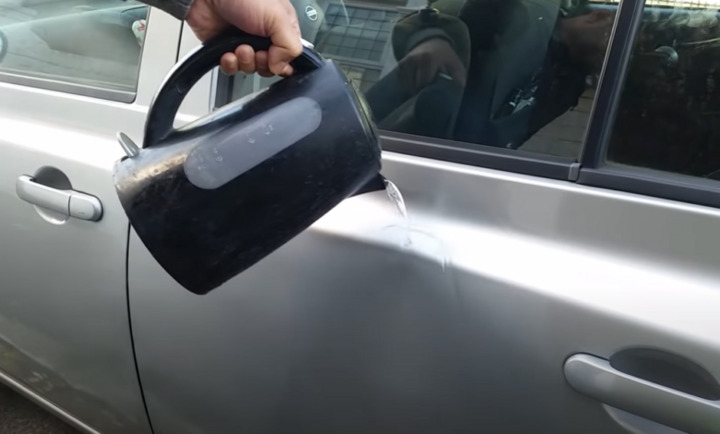Tip for repairing car dents with boiling water
Although it cannot completely replace professional repair methods, the tip for fixing minor dents in cars with boiling water is definitely worth trying for light dents.
When a car gets a slight dent from a collision or external impact, most people tend to take their vehicle to a garage or service center for repairs, which can be costly in both time and money. However, with a simple tip, you can easily handle it at home if the dent is minor.
Guide to Fixing Car Dents with Boiling Water
It may sound unusual, but the method of using boiling water to fix car dents has been tested and proven successful by many people. The important thing is to carry out the process correctly and to pay attention to safety when using boiling water.
This method is based on the principle of the expansion of materials when exposed to high temperatures. Car body panels are typically made from plastic or a certain elastic alloy. When exposed to heat, the plastic or metal will expand, helping the dent return to its original shape. Boiling water creates enough heat to soften and expand the plastic material but does not cause burning or significant deformation.

Before proceeding, you need to prepare the following basic tools:
- Boiling water: About 1-2 liters to pour over the dented area.
- Heat-resistant gloves: To protect your hands when handling hot water.
- Kettle or pot: For boiling water.
- Vacuum tool or dent roller (if available): To help restore the dent more quickly.
Steps to Fix Car Dents with Boiling Water:
1. Boil water in a kettle or pot.
2. Identify the dent location on the car body to pour the water in the right area. Ensure the dented area does not contain any electronic components or parts that could be damaged by water.
3. Wear heat-resistant gloves and slowly pour boiling water over the dented area. Pour evenly to heat the entire area uniformly. If the dent is large, you can pour multiple times to achieve the necessary expansion.
4. Once the plastic has softened, use your hands or a supporting tool (such as a dent roller or vacuum tool) to push from the inside out. This should be done quickly before the plastic cools down.
5. After adjusting the dent, use cold water or a cold wet cloth to cool it down, helping the plastic to harden and retain its restored shape.
In addition to this method, there are many other techniques to address dents, such as using a vacuum cleaner with a funnel, hot glue, or screws with wooden plugs. For minor dents, you can also use a hairdryer or dry ice for repair.
Cautions When Fixing Car Dents with Boiling Water:
- Boiling water can cause burns, so remember to wear gloves and be cautious when performing the process. Avoid pouring boiling water too quickly or without control.
- The tip of using boiling water is only effective for light dents on soft plastic or metal surfaces. For harder components, you should look for other methods or take the car to a professional repair center.
- If the dent is too large or located in hard-to-reach areas, the best option is to take the car to a garage for proper inspection and repair.
Original article and picture by AutoPro
